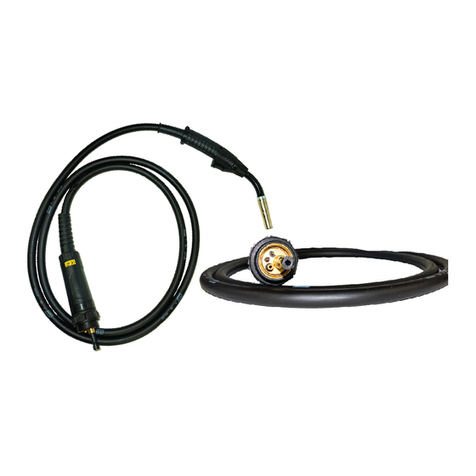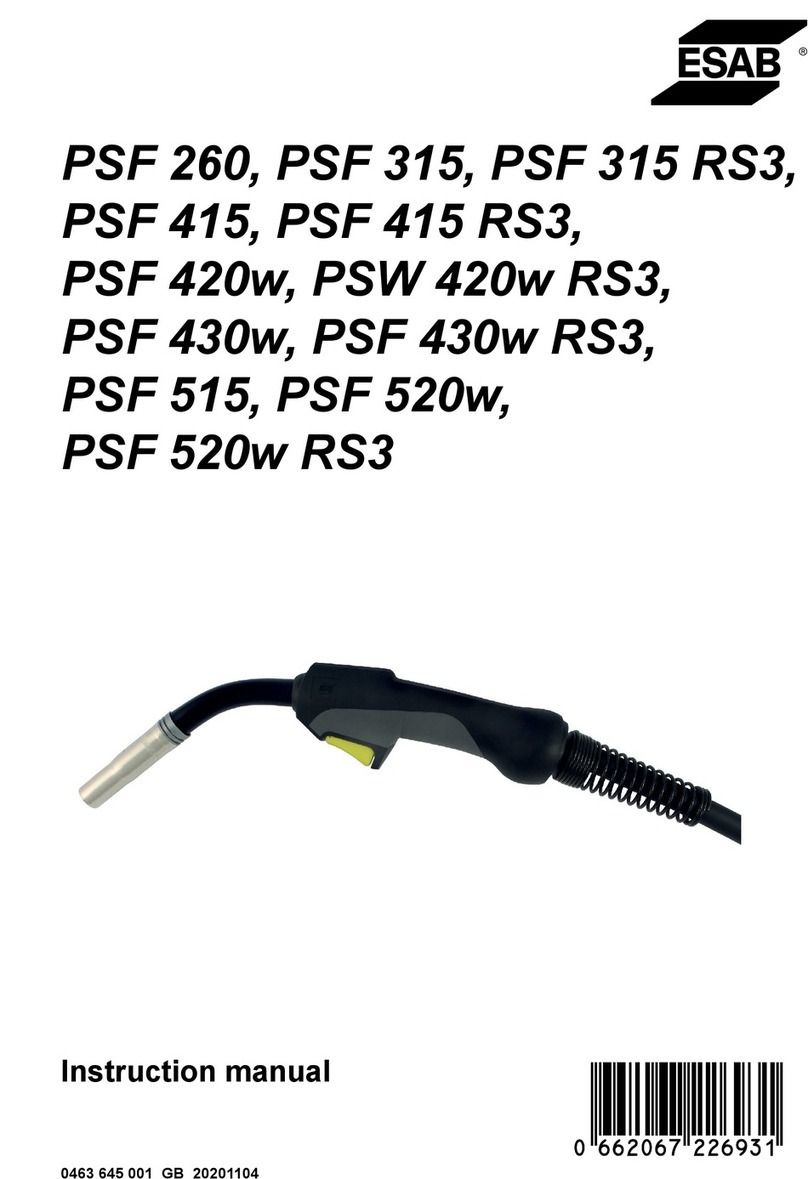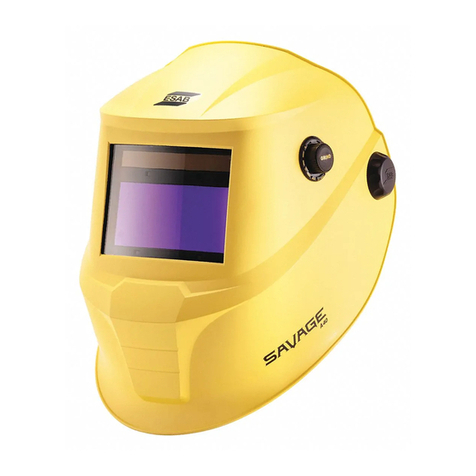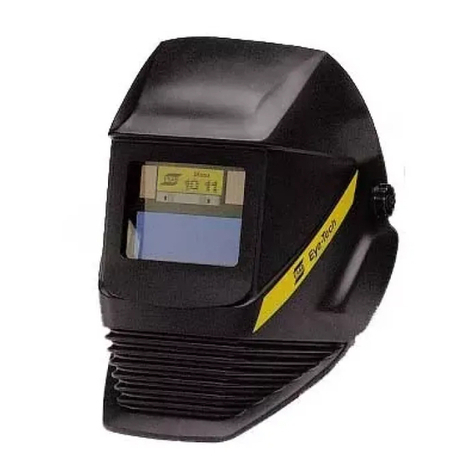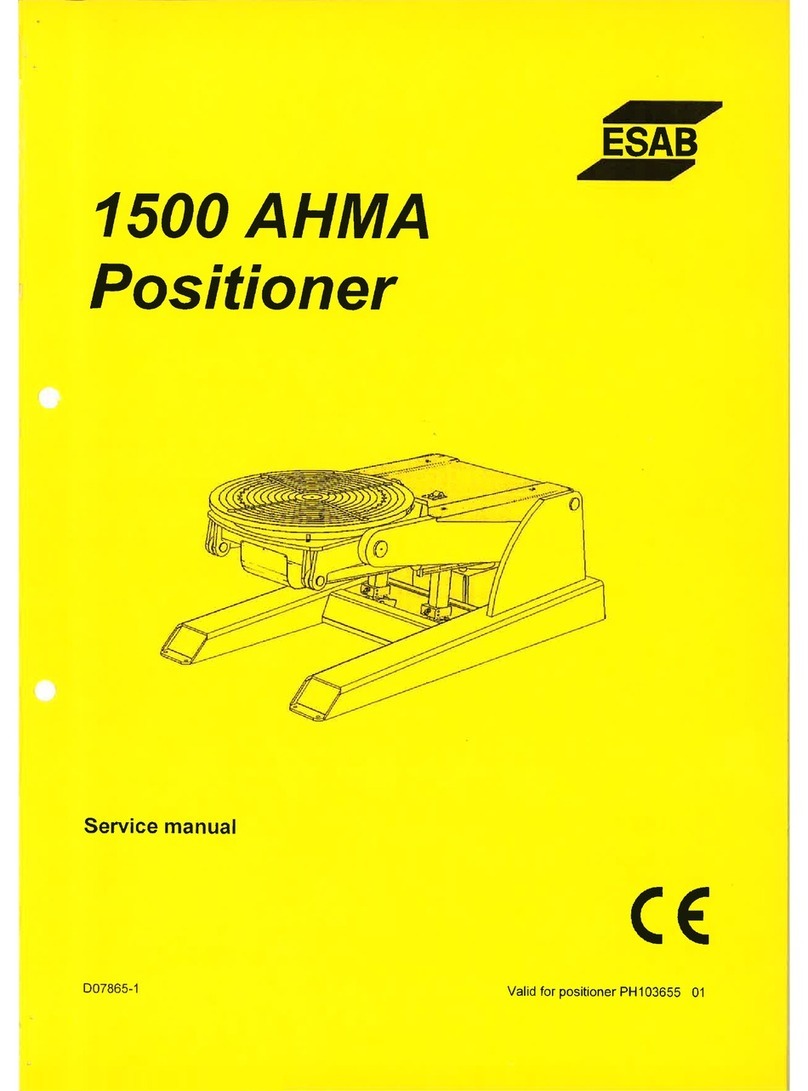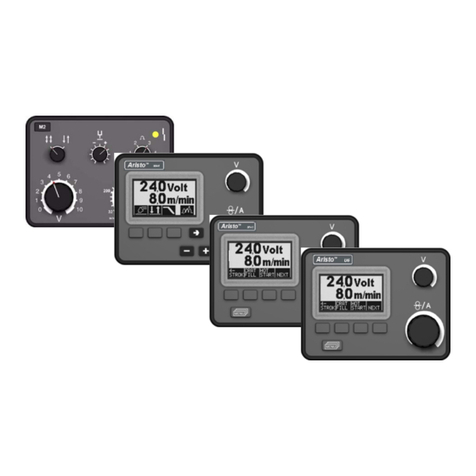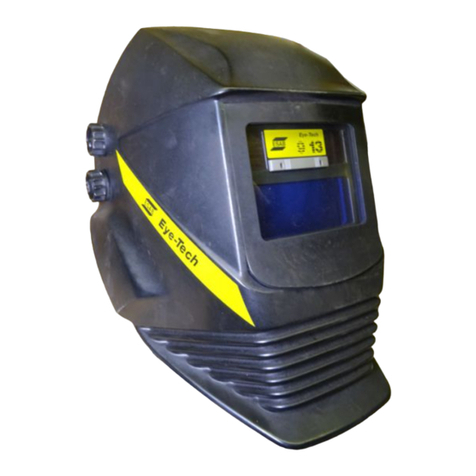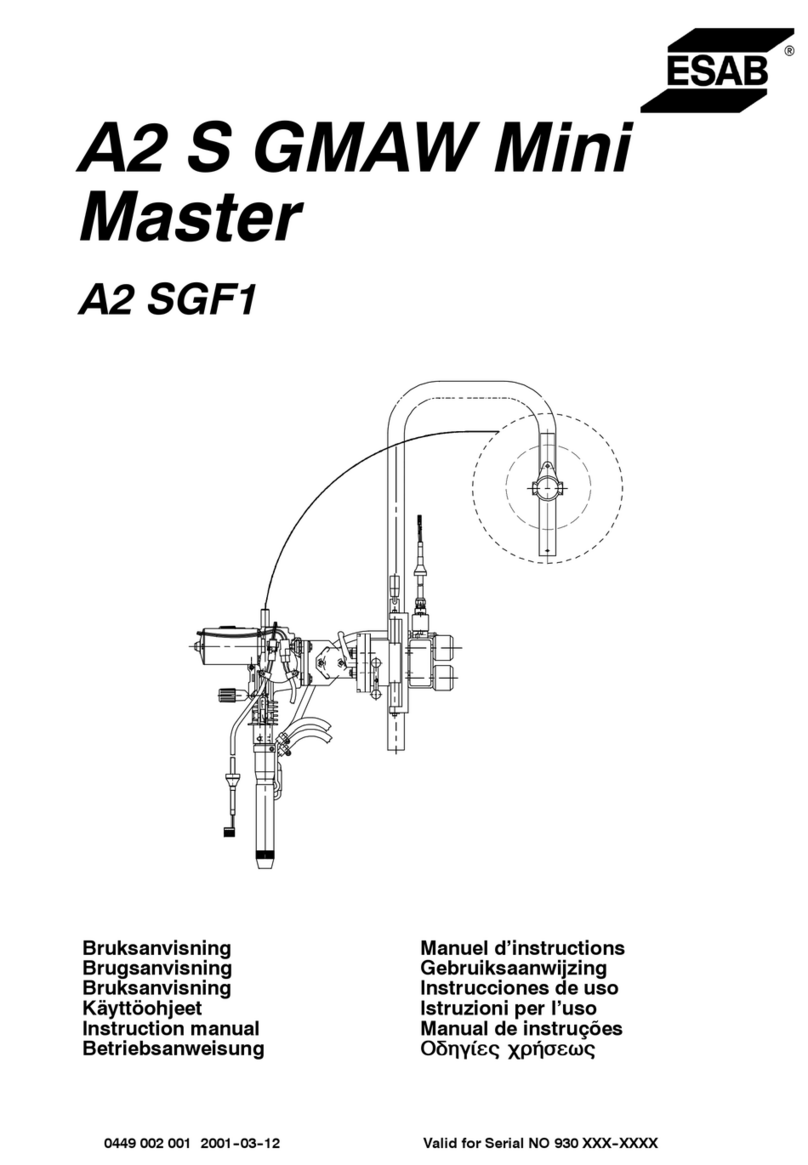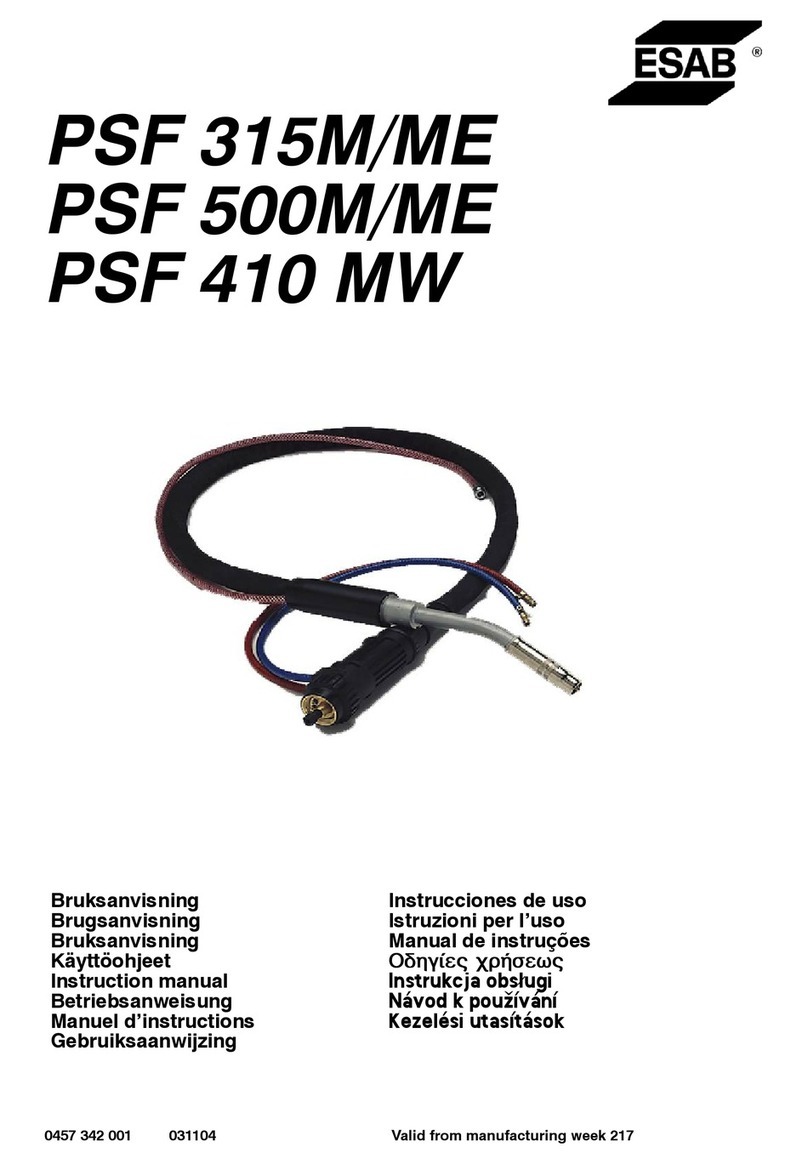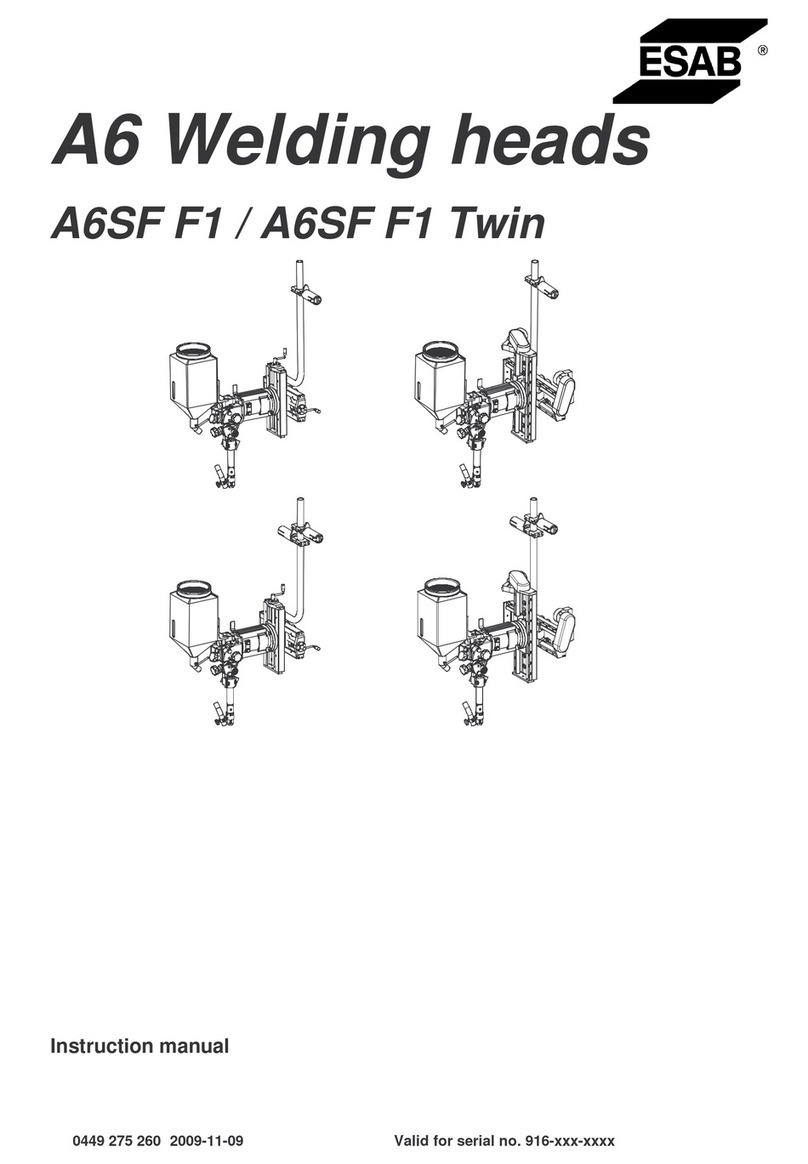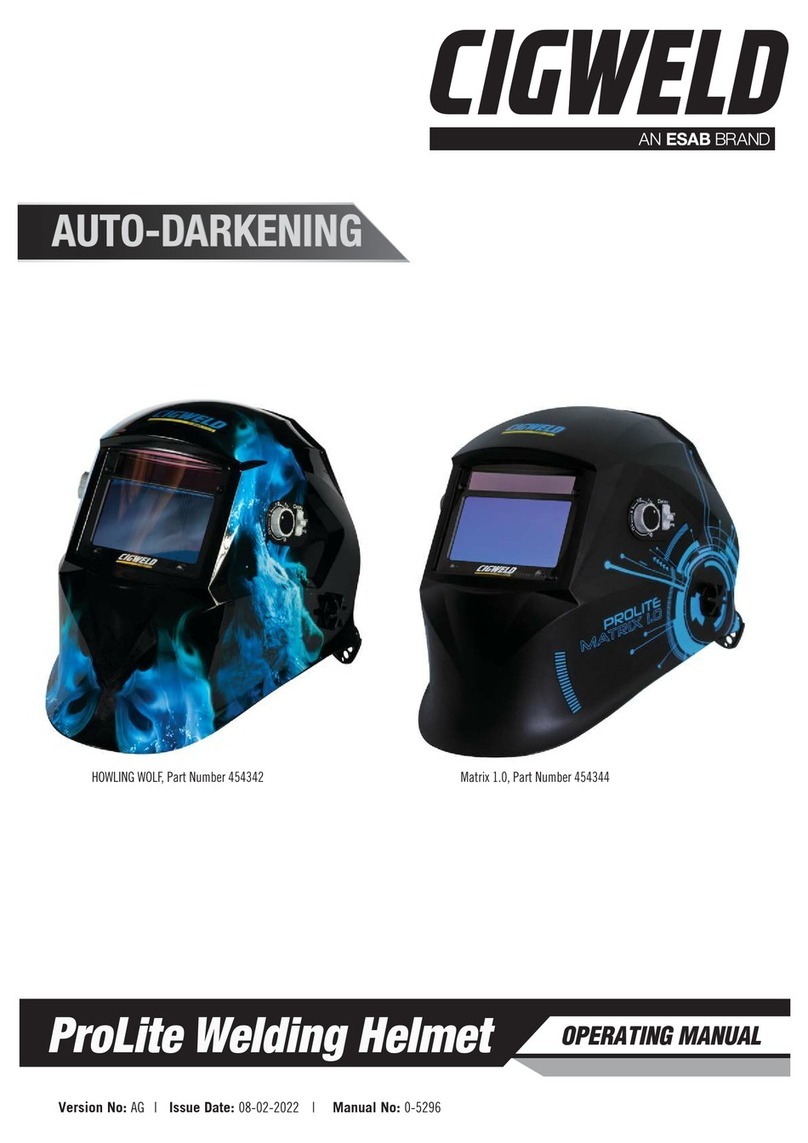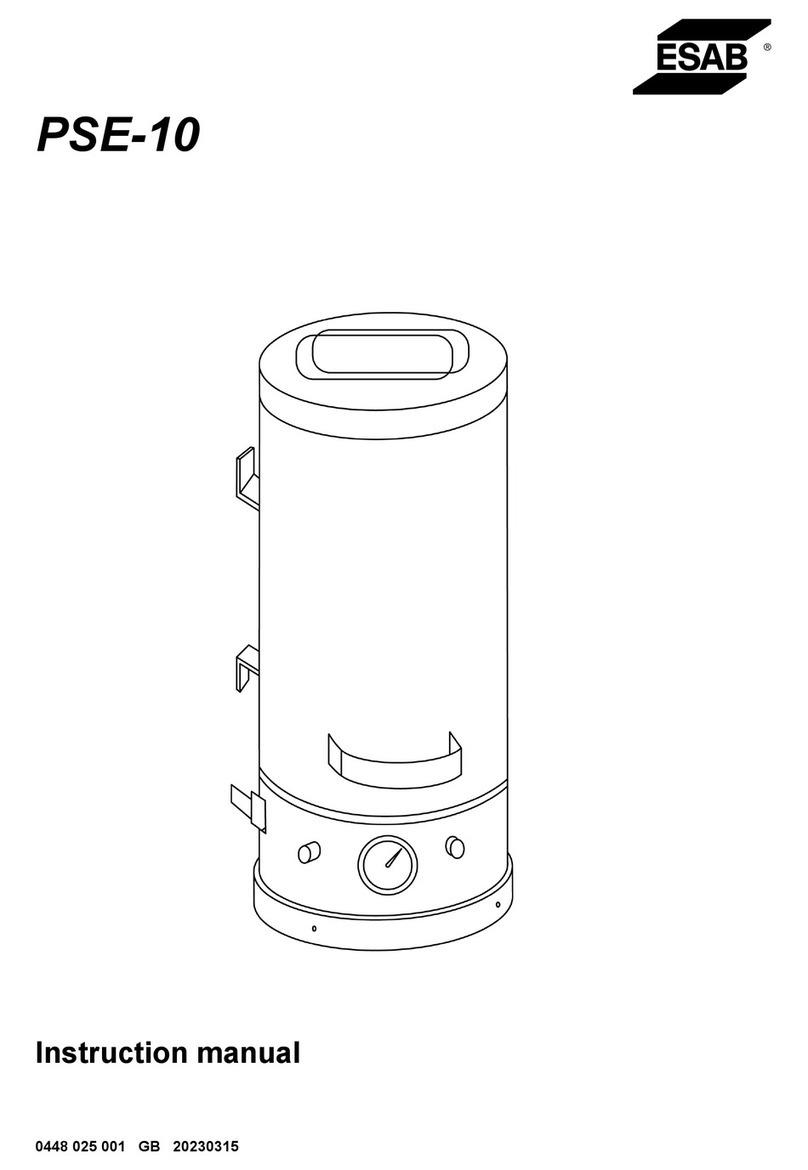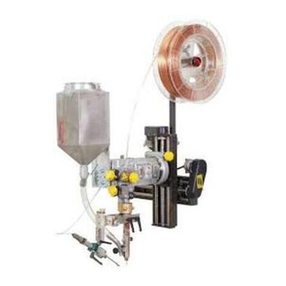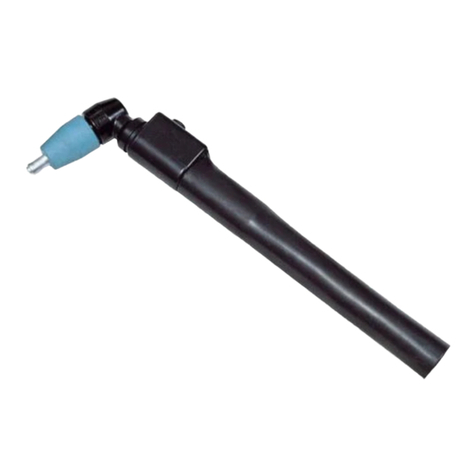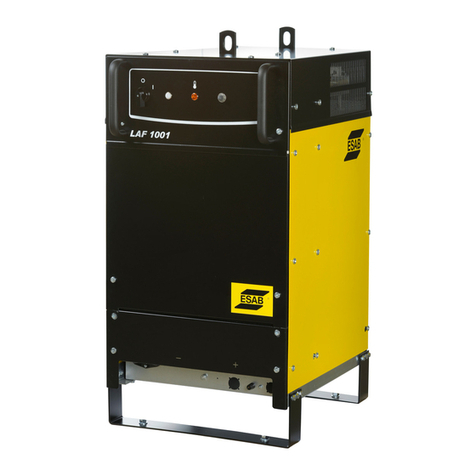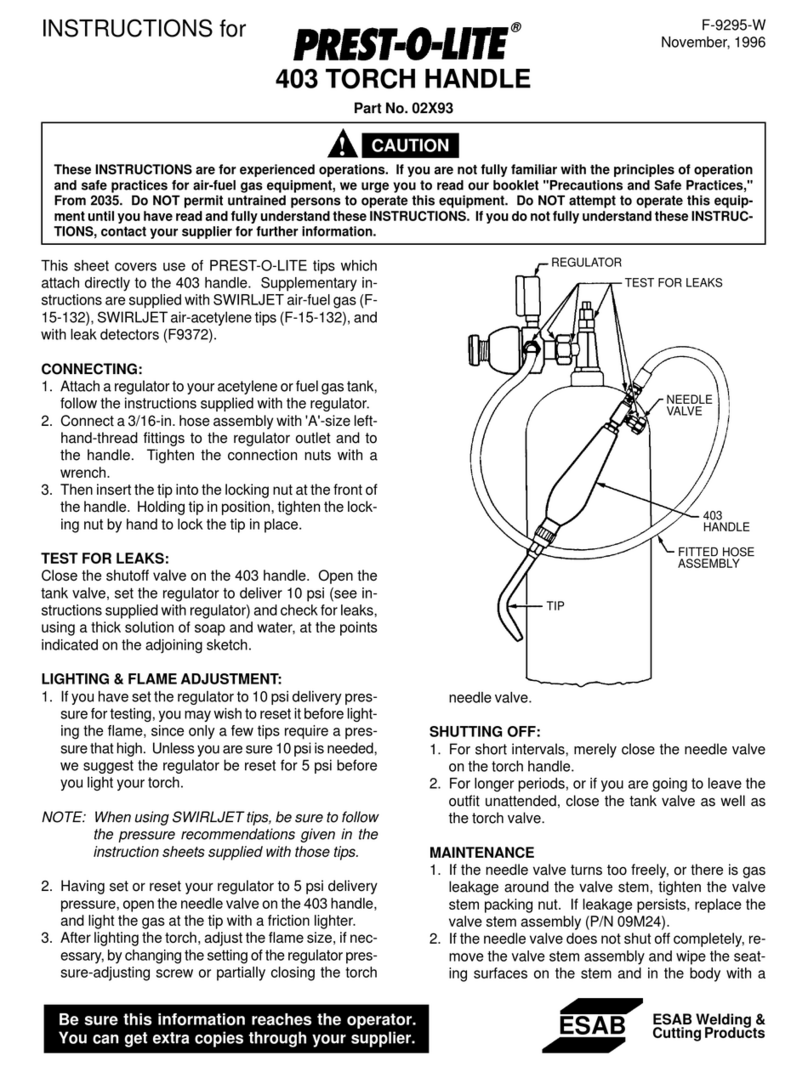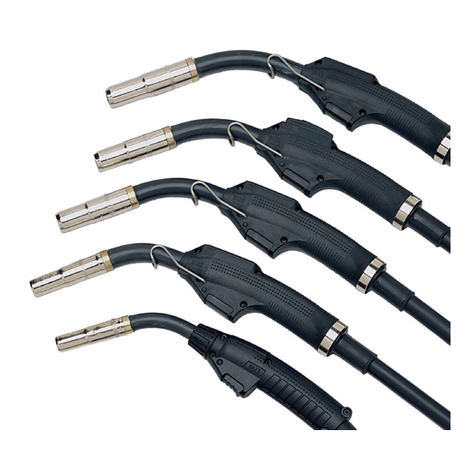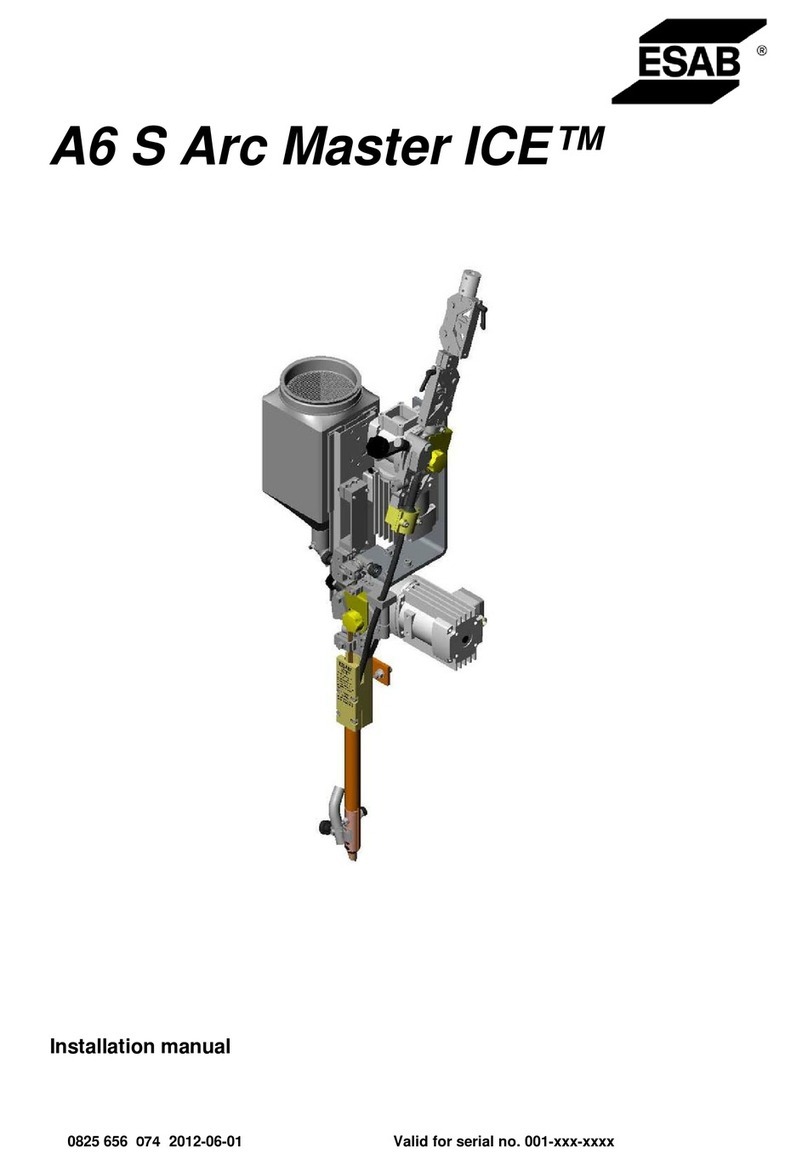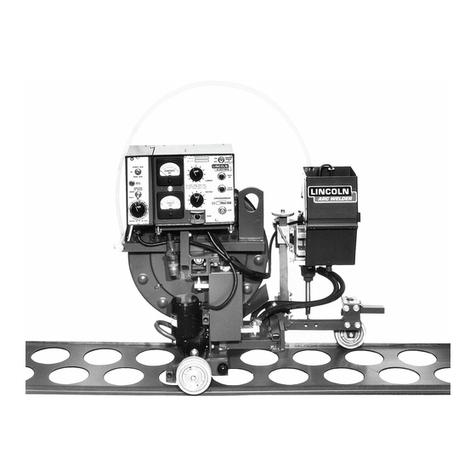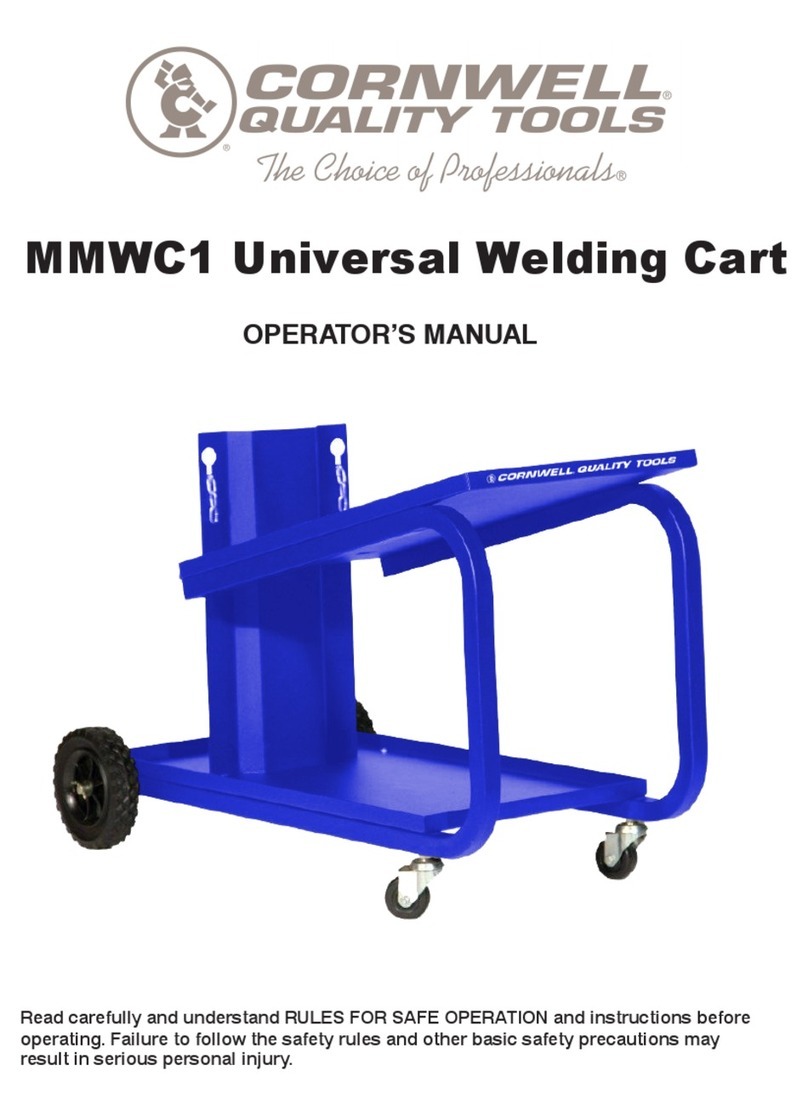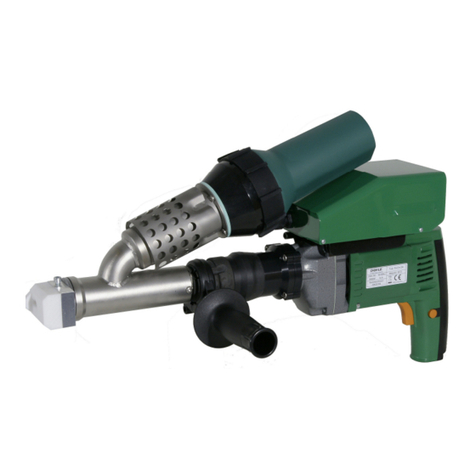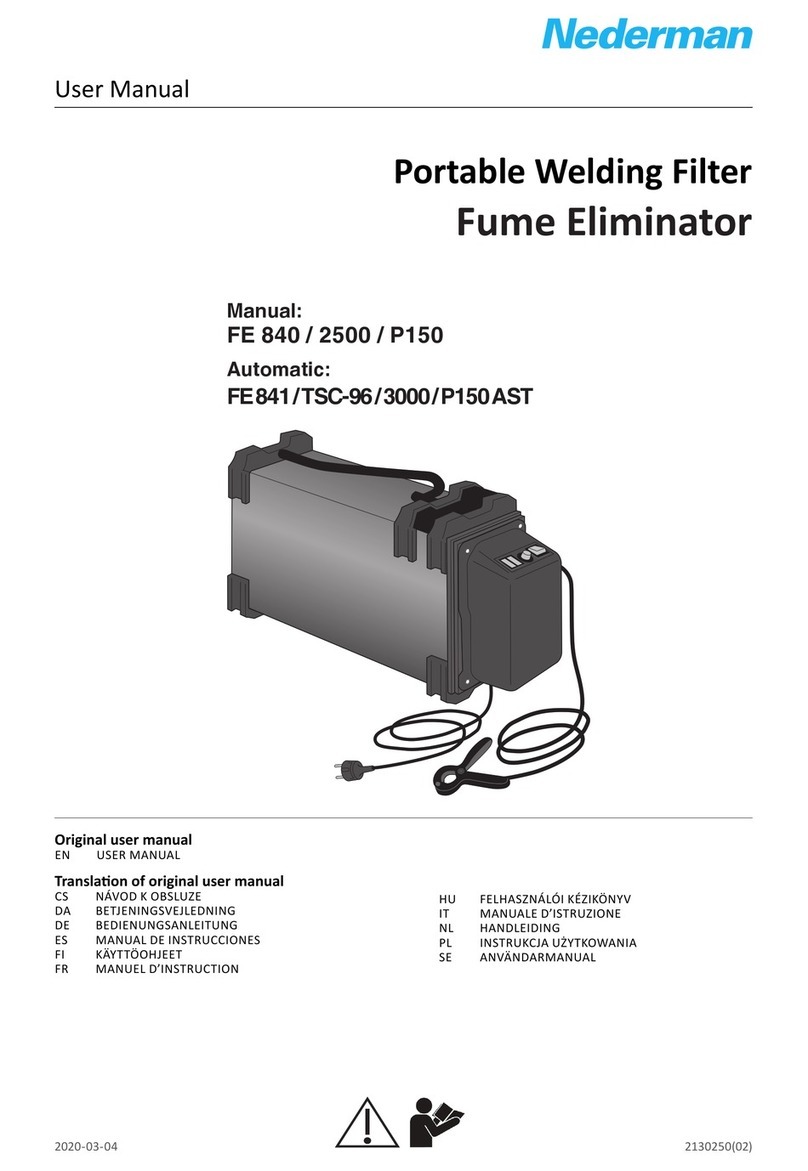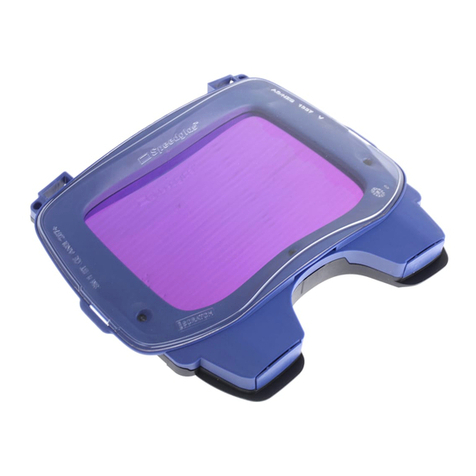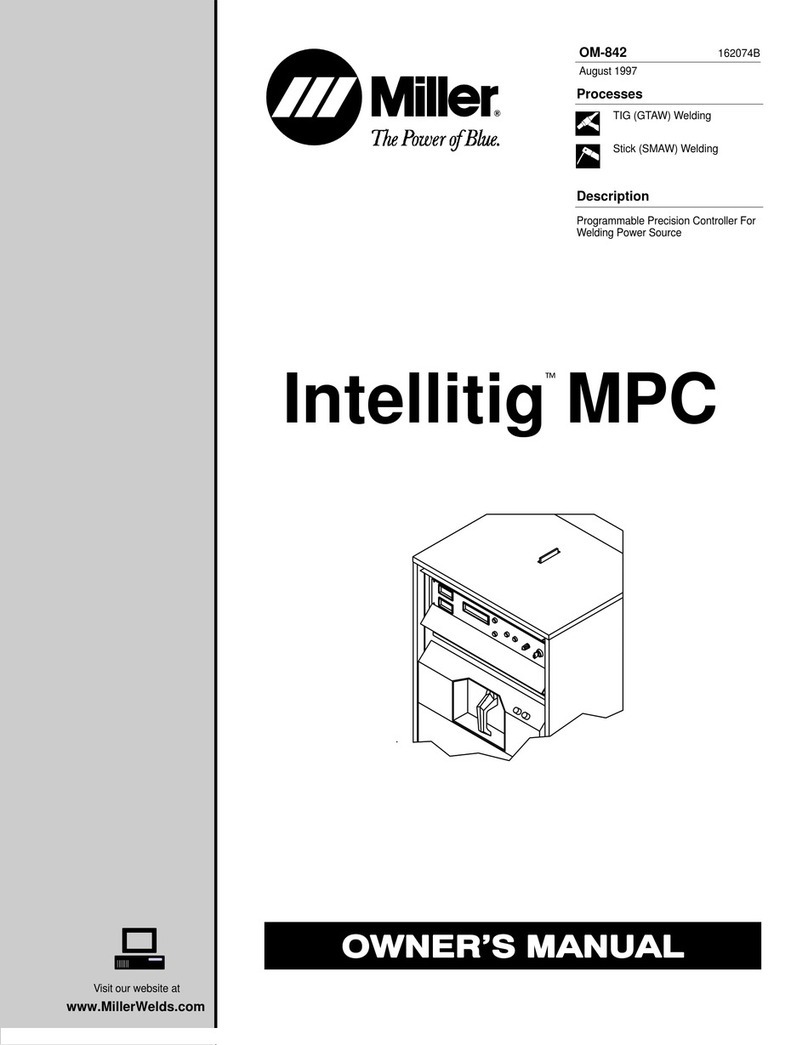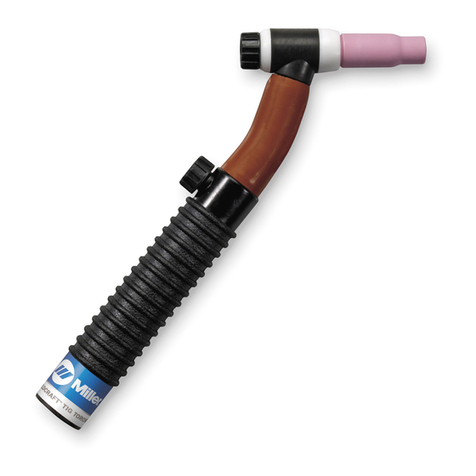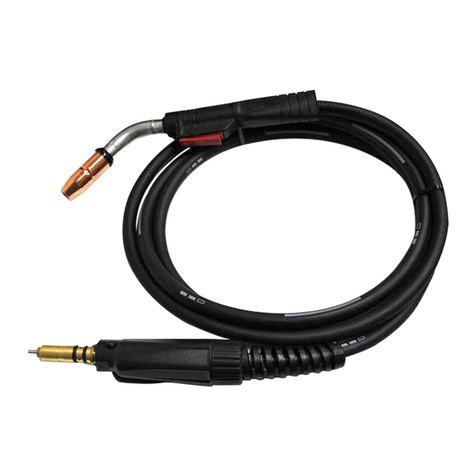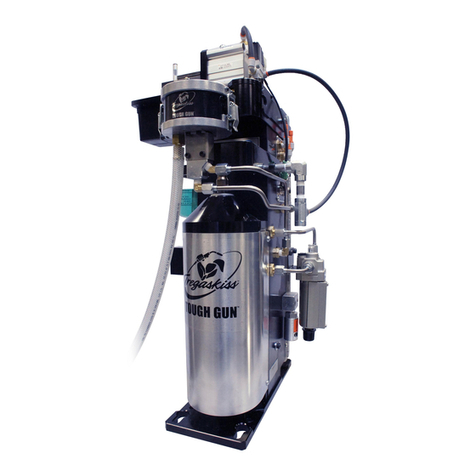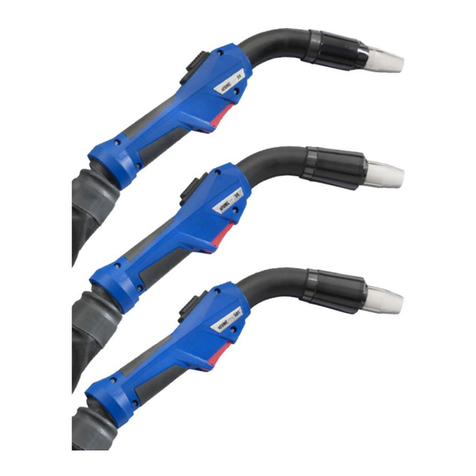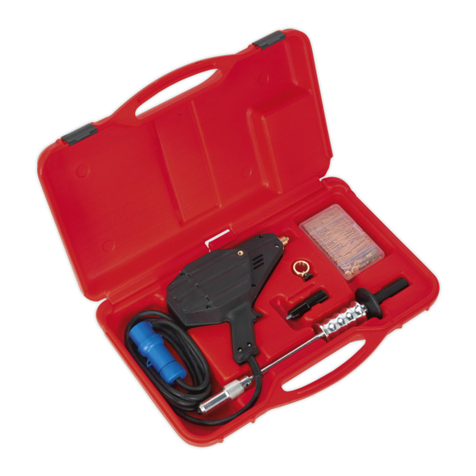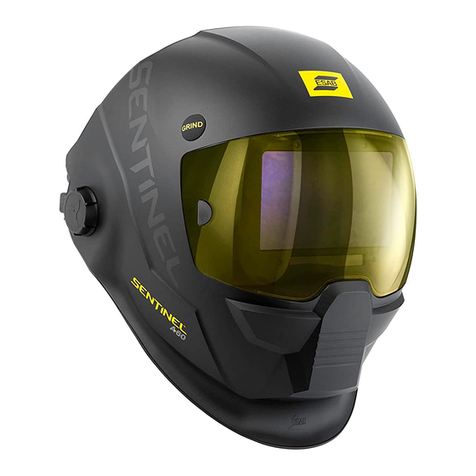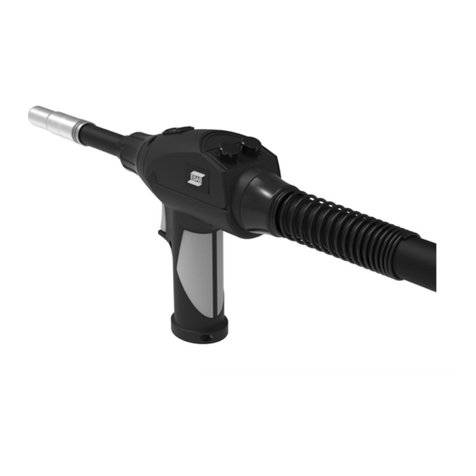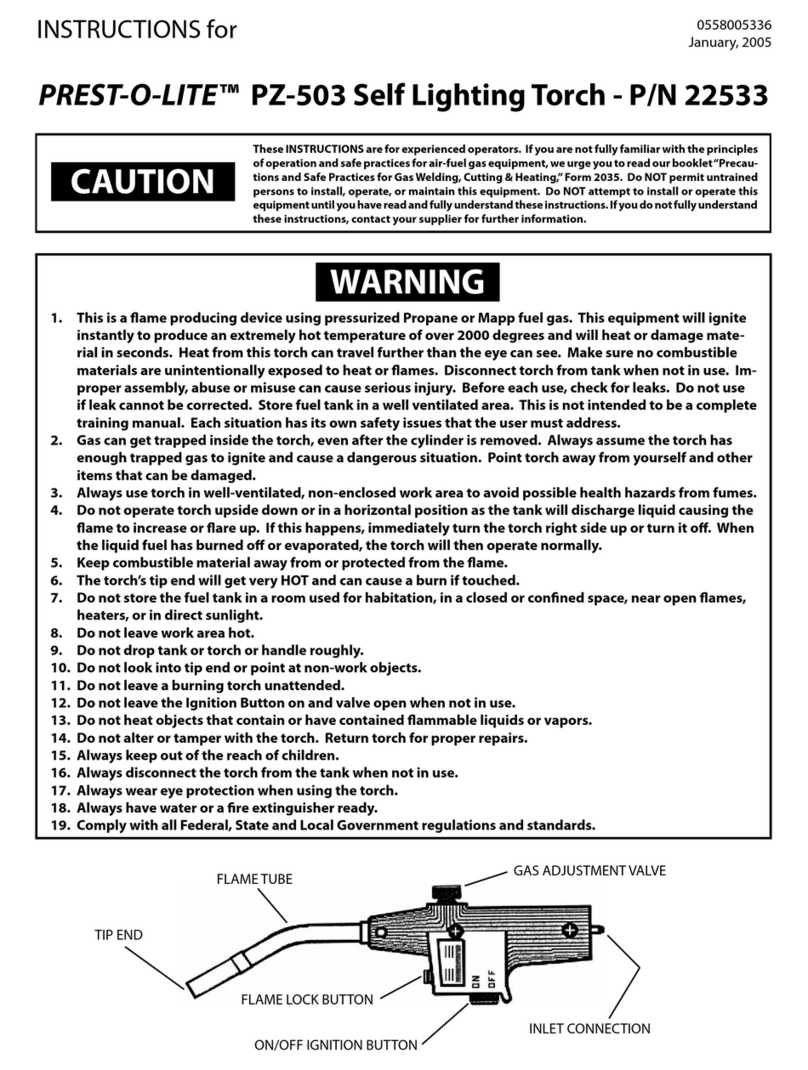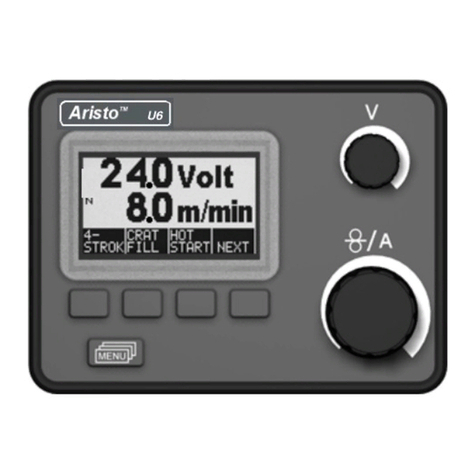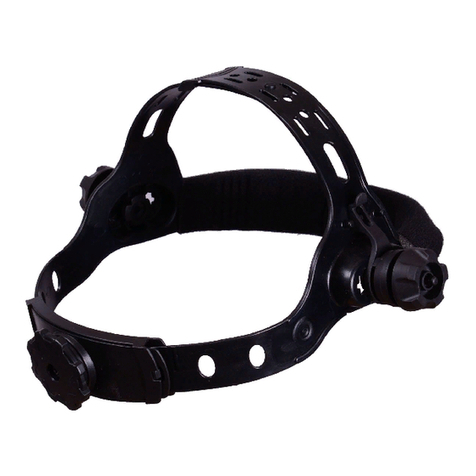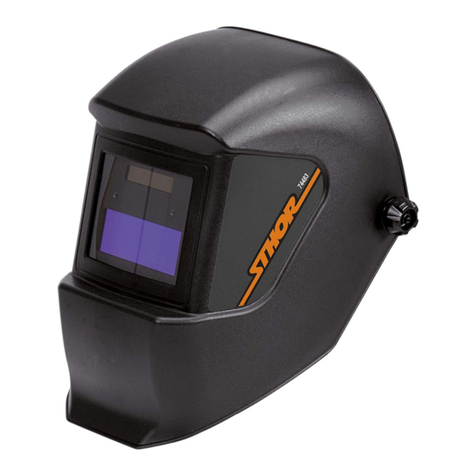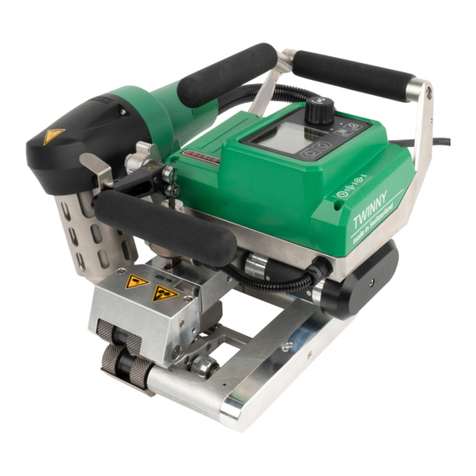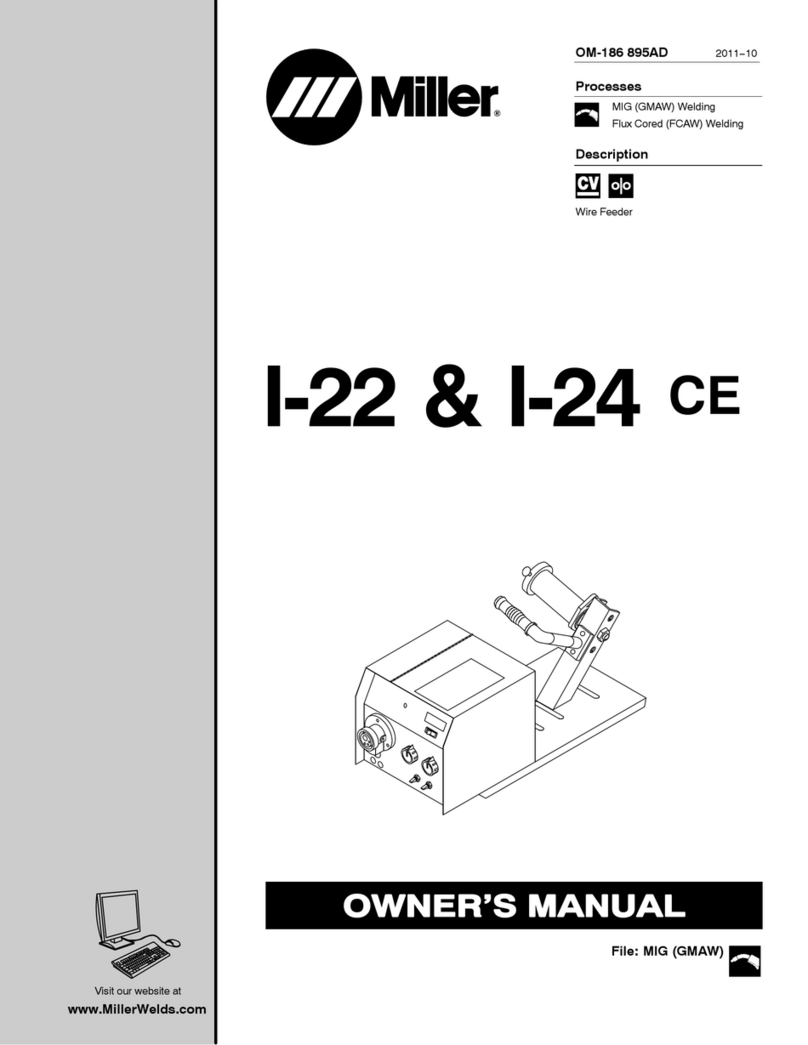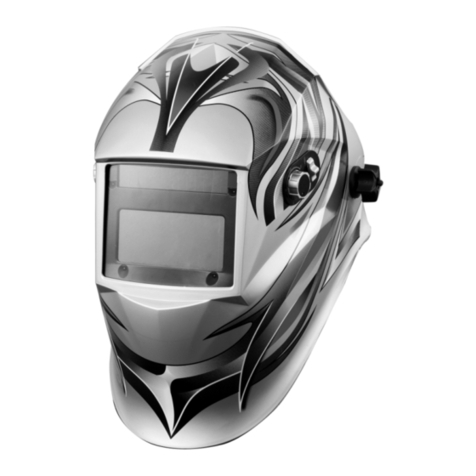
TABLE OF CONTENTS
0463 760 101 -3- © ESAB AB 2023
1 SAFETY ...................................................................................................................................... 4
1.1 Meaning of symbols.................................................................................................... 4
1.2 Non-compliant operation ............................................................................................ 4
1.3 Safety precautions ...................................................................................................... 4
2 INTRODUCTION......................................................................................................................... 7
2.1 Equipment.................................................................................................................... 7
2.2 Purpose and function of EFU ..................................................................................... 7
2.3 Terminology used in this manual............................................................................... 7
3 TECHNICAL DATA ..................................................................................................................... 8
3.1 EFU 30 .......................................................................................................................... 8
3.2 EFU 30 IB ..................................................................................................................... 9
4 INSTALLATION........................................................................................................................... 10
4.1 Location........................................................................................................................ 10
4.2 Lifting instructions ...................................................................................................... 10
4.3 Adjusting the wheel stands ........................................................................................ 10
4.4 Adjusting the included angle ..................................................................................... 12
4.5 Installation procedure ................................................................................................. 12
5 OPERATION ............................................................................................................................... 13
5.1 EFU unit details ........................................................................................................... 13
5.2 Control panel ............................................................................................................... 13
5.3 Wireless remote - control pendant ............................................................................ 14
5.4 Switch the mains power on ........................................................................................ 15
5.5 Operating the fit up unit.............................................................................................. 15
5.6 Operation safety .......................................................................................................... 16
5.7 Welding......................................................................................................................... 17
5.8 Stopping the EFU ........................................................................................................ 18
6 MAINTENANCE.......................................................................................................................... 18
6.1 General ......................................................................................................................... 18
6.2 Storage ......................................................................................................................... 18
6.3 Repair and maintenance............................................................................................. 18
6.4 Cleaning ....................................................................................................................... 19
6.5 Breakdowns ................................................................................................................. 19
6.6 Electromechanical cylinder........................................................................................ 19
6.6.1 Lubrication trapezoid spindle/tube MCT 75(standard) / MCT 75 WE................. 20
6.6.2 Lubricant............................................................................................................. 20
6.6.3 Bearings ............................................................................................................. 21
6.6.4 PU Wheels ......................................................................................................... 21
7 TROUBLESHOOTING ................................................................................................................ 21
7.1 Mechanical malfunctions............................................................................................ 22
7.2 Electrical malfunctions ............................................................................................... 22
8 ORDERING SPARE PARTS ....................................................................................................... 23
ORDERING NUMBERS......................................................................................................................... 24
WIRING DIAGRAM................................................................................................................................ 25
ACCESSORIES ..................................................................................................................................... 31
